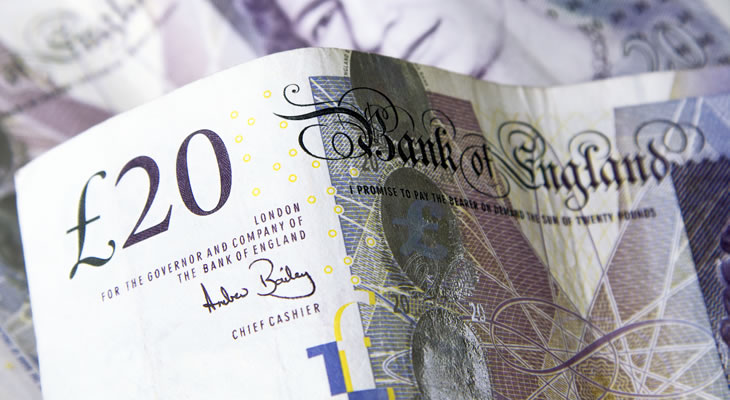The Pound US Dollar exchange rate surged at the beginning of the week due to month-end fixings and the US Dollar has been unable to recover due to political jitters weighing on sentiment. GBP USD has advanced from 1.3133 to near a 2017-high of 1.3224 this week and could advance further depending on this week’s data.
Pound (GBP) Benefits from Manufacturing PMI
Demand for the Pound has improved this week. Sterling’s Monday advance was largely unrelated to domestic news and was simply down to markets settling their positions in month-end fixings.
Despite the lack of any change in market sentiment, Sterling has held most of yesterday’s gains against the US Dollar and tested its best 2017 levels again on Tuesday as investors reacted to Markit’s British manufacturing PMI for July.
Manufacturing was forecast to improve slightly, from 54.3 to 54.4 but instead jumped from a revised 54.2 to 55.1.
Analysts and markets were generally impressed by the result, which indicated that foreign demand for UK-made goods was improving at the fastest rate since 2010.
IHS Markit Director Rob Dobson stated that Britain’s manufacturing sector looks to have started the third quarter off strongly after a dip in June.
However, other analysts have pointed out that Markit’s manufacturing print has been more optimistic than the Office for National Statistics’ (ONS) official results in recent months.
Pound demand could see further support later in the week depending on Markit’s other reports, which will be published through Thursday when Britain’s key services print will come in.
This week’s Bank of England (BoE) policy decision is also vital to the Pound outlook. If the number of policymakers who vote in favour of leaving UK policy frozen increases, Sterling is likely to weaken in the late-week regardless of PMI results.
Recent meetings have seen policymakers voting to hike rates due to soaring UK inflation. If no policymakers decide to vote for a hike this week the long-term Pound outlook will worsen as speculation about potential hawkishness from the Bank of England (BoE) fades.
US Dollar (USD) Investors Uneasy as Political Jitters Persist
The US Dollar has been unappealing to traders over the last week despite an occasional solid US ecostat, as Federal Reserve rate hike bets remain low and political uncertainties have persisted.
Due to a lack of consistently strong US data, slowing inflation and the cautiousness of Federal Reserve officials, bets of the Fed will leave interest rates frozen until 2018 are currently higher than bets of a third 2017 rate hike.
On top of this, the US Donald Trump Presidency continues to surprise markets and cause confusion. At the beginning of the week Trump fired Anthony Scaramucci, who had been the White House’s new communications director for a mere 10 days.
The chaos perceived in the White House as well as the Republican Party’s failure to pass key healthcare legislation has damaged the confidence markets had in the Trump administration at the beginning of the year.
Still, the US Dollar could become more appealing again if the economic outlook improves, and there’s plenty of data this week that could boost the ‘Greenback’.
ISM will publish its July PMIs throughout the week and Friday will see the publication of key datasets such as June’s trade balance and July’s anticipated Non-Farm Payroll report.
If this week’s key US data impresses traders, Fed rate hike bets will improve again and the US Dollar will strengthen. This could help it to recover against the Pound.
GBP USD Interbank Rate
At the time of writing this article, the Pound US Dollar exchange rate trended in the region of 1.3226. The US Dollar to Pound exchange rate traded at around 0.7560.


Comments are closed.